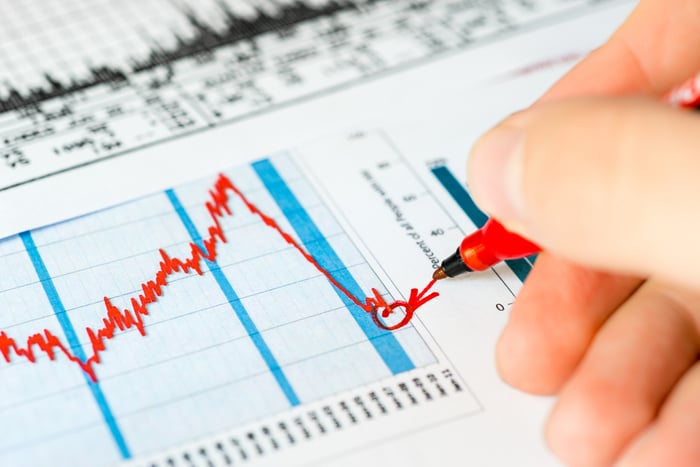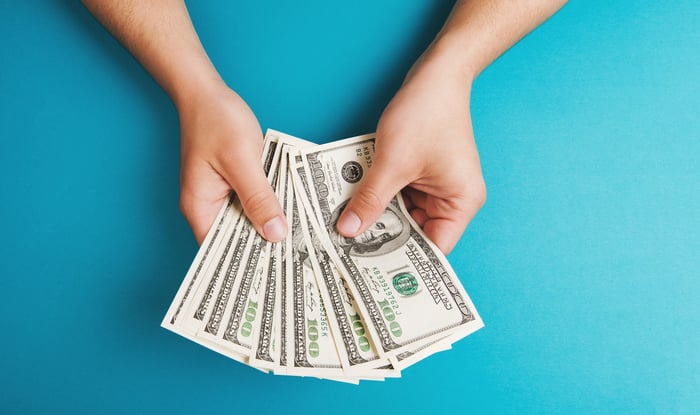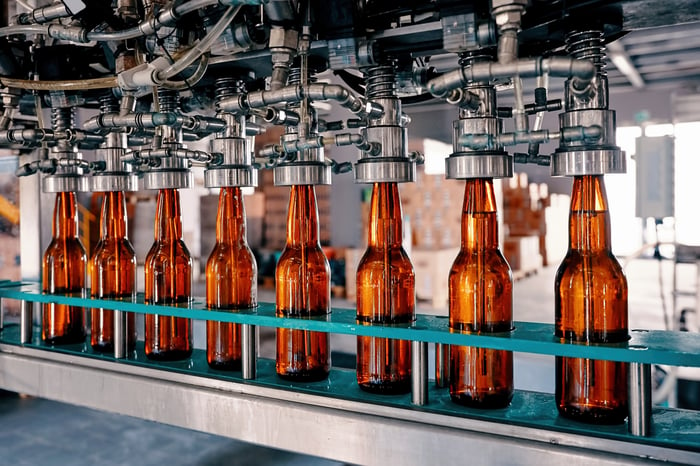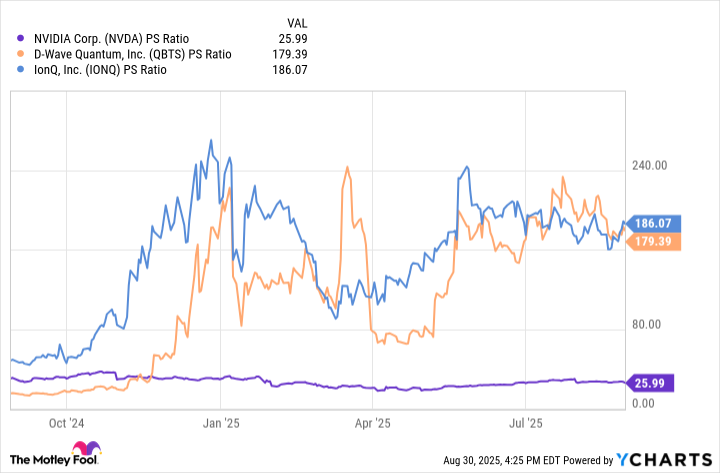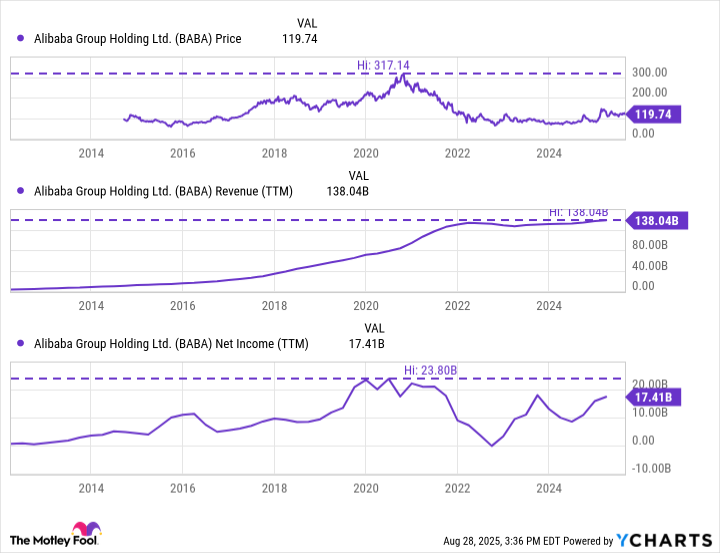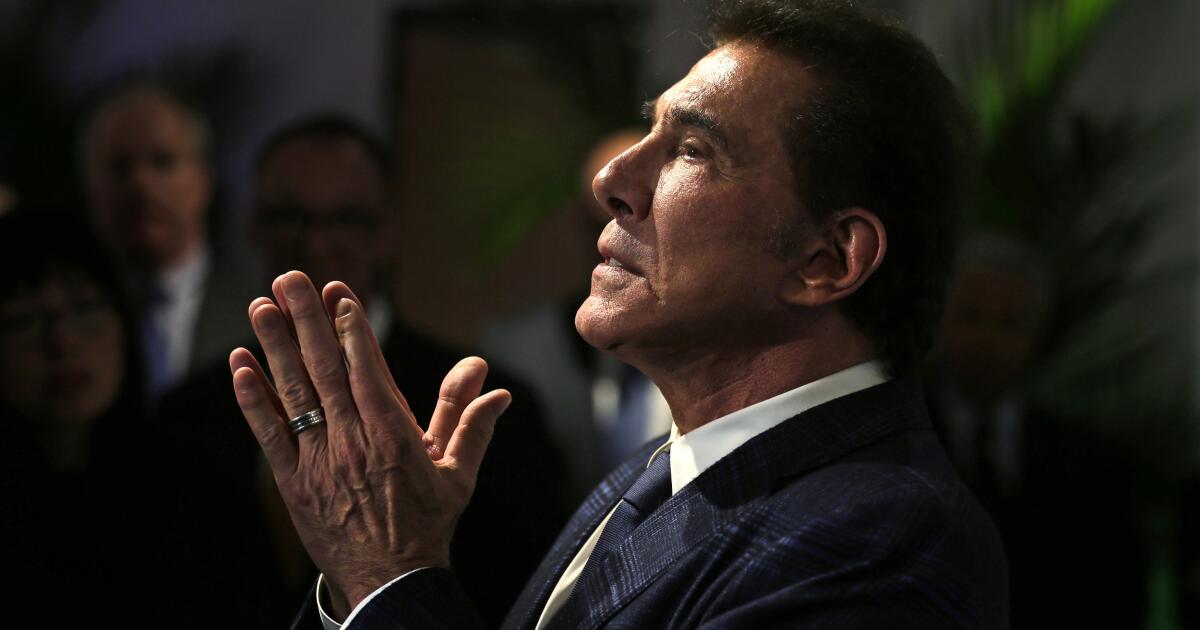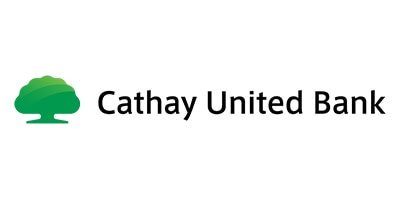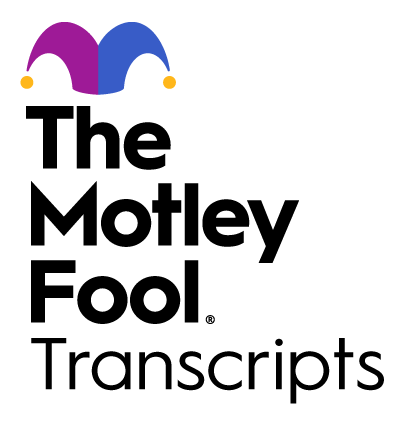
Image source: The Motley Fool.
DATE
Thursday, August 7, 2025 at 8:30 a.m. ET
CALL PARTICIPANTS
Chief Executive Officer — Daniel T. Scavilla
Chief Financial Officer — Matthew E. Garth
Need a quote from a Motley Fool analyst? Email [email protected]
RISKS
Goodwill and Intangible Asset Impairment—DENTSPLY SIRONA(XRAY -4.13%) recorded a $214 million noncash after-tax impairment charge for goodwill and other intangibles within the OIS and CTS segments in fiscal Q2 2025 (period ended June 30, 2025) (GAAP), attributed to tariffs and volume changes that diverged from initial investment assumptions.
Tariffs— CFO Garth disclosed an annualized gross tariff impact increase from $50 million to $80 million for fiscal year 2025, with $25 million expected to affect 2025 earnings as costs roll through fiscal Q3 and Q4.
U.S. Revenue Decline— U.S. segment sales fell 18% in fiscal Q2 2025; excluding Byte, the decline was 11% (non-GAAP), primarily due to weakness in connected technology solutions and orthodontic and implant offerings.
Cash Flow Decrease— Operating cash flow dropped to $48 million, compared to $208 million in the prior year quarter, mainly due to the timing of cash collections, inventory build, and the absence of a $42 million foreign tax refund received in fiscal Q2 2024.
TAKEAWAYS
Revenue— $936 million, down 4.9% as reported and 6.7% on a constant currency basis for fiscal Q2 2025, with half the decline from Byte.
Adjusted EBITDA Margin— Adjusted EBITDA margin was 21%, up 360 basis points versus the prior year, driven primarily by Byte impact and cost reductions.
Adjusted EPS— Adjusted EPS was $0.52, representing 7% year-over-year growth, attributable to margin expansion, FX, and lower share count, partially offset by higher taxes and below-the-line items (non-GAAP).
Cash and Cash Equivalents— $359 million at quarter end, with a net debt-to-EBITDA ratio of 3.1x (non-GAAP), unchanged sequentially.
Hybrid Bond Offering— Completed a $550 million raise, improving financial flexibility.
EDS Segment— Sales rose 1.1% in constant currency, led by Rest of World, offsetting lower volumes in Europe and the U.S.
OIS Segment— Sales (non-GAAP) dropped 19.4% in constant currency. Byte comprised more than half, and value implants were down low double digits.
CTS Segment— Sales fell 5.9% in constant currency; double-digit European imaging growth offset by declines in U.S. CAD/CAM and imaging (non-GAAP).
Wellspect Healthcare— Sales declined 2.5% in constant currency (non-GAAP), reflecting prior-year dealer stocking and new product launches.
SureSmile— Delivered 3.3% year-over-year global growth, with strong European and Rest of World results partially offset by softness in the U.S.
Germany— Marked a fourth consecutive quarter of growth, driven by CTS and SureSmile expansion; offset by IPS weakness.
Outlook— Full-year 2025 sales, adjusted EBITDA margin, and adjusted EPS (non-GAAP) guidance reiterated. Fiscal Q3 sales and adjusted EPS are expected to decline sequentially due to tariffs and seasonality.
DS Core Platform— Reached 50,000 unique users, with increasing device connectivity and lab orders processed monthly.
Field Investment— CEO Scavilla committed to enhancing field team support, customer focus, and proceduralization as strategic imperatives.
SUMMARY
Management confirmed a strategic shift toward customer-centric execution, emphasizing field enablement and operational streamlining to support margin enhancement despite top line pressures. The company is actively accelerating innovation and procedural offerings, with DS Core adoption highlighted as a central element of the growth strategy. Investments in sales force capabilities and prioritized capital allocation aim to strengthen competitive positioning and free up resources for sustained innovation.
CFO Garth said, “The year-over-year decline is primarily attributable to the timing of cash collections, a higher build of inventory in anticipation of ERP go-lives and tariffs, and an approximately $42 million foreign tax refund received in the prior year quarter [fiscal Q2 2024].”
CEO Scavilla confirmed active engagement with distribution partners, noting an intention to “listen and learn” before determining long-term channel strategy.
Segment-level results (non-GAAP) demonstrate relative stability in Europe and Rest of World compared to pronounced U.S. sales compression, with Germany sustaining positive momentum amid global variability.
No significant distributor inventory shifts impacted revenue year-over-year, according to CFO Garth.
Management aims to offset emerging tariff costs and macro softness through ongoing cost controls, focused investments, and procedural innovation, pending further review under new leadership.
INDUSTRY GLOSSARY
Byte: Direct-to-consumer clear aligner business, referenced in segment and revenue discussions related to orthodontics.
CTS: Connected Technology Solutions, a segment encompassing digital imaging, CAD/CAM equipment, and related dental technologies.
EDS: Essential Dental Solutions, a segment covering endodontic, restorative, and preventative dental products.
SureSmile: A DENTSPLY SIRONA clear aligner solution for orthodontic treatments; performance is reported within OIS and by region.
IPS: Implant Prosthetic Solutions, referencing dental implant and prosthetic product lines within the OIS segment.
DS Core: Company-developed digital platform integrating devices, data, and workflows for dental professionals.
VBP: Volume-Based Procurement, a purchasing model in China impacting implant sales volume and pricing.
Hybrid bond: A subordinated debt security combining debt and equity features, used to bolster liquidity and financial flexibility.
Full Conference Call Transcript
Dan Scavilla, Chief Executive Officer; and Matt Garth, Chief Financial Officer. I’d like to remind you that an earnings press release and slide presentation related to the call are available in the Investors section of our website at www.dentsplysirona.com. Before we begin, please take a moment to read the forward-looking statements in our earnings press release. During today’s call, we may make certain forward-looking statements that reflect our current views about future performance and financial results. We base these statements and certain assumptions and expectations on future events that are subject to risks and uncertainties.
Our most recently filed Form 10-K and any updated information in subsequent Form 10-Q or other SEC filings list some of the most important risk factors that could cause actual results to differ from our predictions. On today’s call, our remarks will be based on non-GAAP financial results. We believe that non-GAAP financial measures offer investors valuable additional insights into our business’ financial performance, enable the comparison of financial results between periods where certain items may vary independently of business performance and enhance transparency regarding key metrics utilized by management in operating our business. Please refer to our press release for the reconciliation between GAAP and non-GAAP results. Comparisons provided are to the prior year quarter unless otherwise noted.
A webcast replay of today’s call will be available on the Investors section of the company’s website following the call. And with that, I will now turn the call over to Dan.
Daniel T. Scavilla: Thank you, Andrea, and good morning, everyone. This is my first earnings call since taking the CEO role on August 1. So I thought it would be appropriate to open with a few statements before progressing into the Q2 business results. Then Matt will cover Q2 financials and give an update on our 2025 outlook. First, I want to thank Simon for his nearly 3 years in the role, where he built a strong team, strengthened communications with our customers and initiated multiple programs to improve DENTSPLY SIRONA’s position in the market.
Having come from our Board of Directors, I can tell you that I personally appreciate the work he’s done, and I plan to build on these programs with an eye on moving deeper, faster and strengthening our long-term position in the market. Second, I look forward to partnering with Matt as our new CFO. I believe Matt’s experience and background are exactly what we need, and we’re forming a strong partnership as we move forward together. I’ve also had the opportunity to engage with senior leadership at DENTSPLY SIRONA, and my initial assessment is that we have the core foundation to shape this company’s future.
I’m sure many of you are wondering what I plan on doing and what changes you should expect from me. While I do have several hypotheses and ideas on what to focus on, I’m currently working with the team and our customers to listen and learn so we can prioritize and focus our approach before fully developing pathways. There are a few areas that are immediately apparent that I’ll share with you now, starting on Slide 3. I’ve been focusing initially on providing stability to the organization through the CEO change, so we can focus on execution and drive results.
I’ve been active with the DS team connecting, interacting and conducting deep dives to listen, learn and align on our go-forward approach. We will continue to improve our focus on the customer and the customer experience. Every position in every department will make this a priority. We will enhance our support of the customers and our field-based employees through simplifying interactions, speed of response and increased strategic investments. The field team is and will become even more so a strength of our company, the tip of our spear.
We will focus on enhancing investments in innovation, including speed to market and adding value to our clinicians and their workflows so that they can offer the best products and services to their patients and grow their skills and practices. As market leaders, we will need to shape the future of our markets, partnering with our practitioners to migrate from product offerings into proceduralization, focusing on the complete provider patient experience, leveraging the strength of our entire company’s broad portfolio to outpace competition. DS Core platform is a critical element of the company’s strategy, and it continues to gain traction with 50,000 unique users now using the platform and more connected devices and lab orders processed each month.
We have a strong supply chain under great leadership that I believe we can enhance even further through streamlining several components to unlock value, reduce cost and free funds to invest in fueling future growth. As you’ve heard from us, we have programs underway that will continue, but we’ll also be looking at more strategic moves to better position ourselves for the future. Wrapped around our commercial enablement, innovation engine and operations muscle will be streamlined support functions that will add value through simplifying and standardizing systems, processes and structure that will allow us to move faster support customers better and unlock funds that can be redirected into sustained profitable growth.
The team has made progress here as seen in our financial results, but there’s more work to do in this area. I believe that focusing on the customer, moving with urgency, while investing in our sales team and product development capabilities will unlock value throughout our P&L. We will make decisions to support long-term sustained growth that leads to stronger financial performance, benefiting our business and our shareholders. Moving into our Q2 business results on Slide 4. Global sales were $936 million, decreasing 5% as reported or negative 7% on a constant currency basis. Excluding the Byte impact, sales declined approximately 4%. Adjusted EBITDA margin was 21%, increasing 360 basis points versus prior year Q2.
Adjusted earnings per share were $0.52, growing 7% versus prior year. Both adjusted EBITDA and EPS results are driven primarily from Byte impact and active cost reduction programs. Cash flow from operations was $48 million for the quarter. Our data and customer survey in the second quarter show global patient volumes and procedures largely unchanged from previous quarters. From a regional perspective, U.S. sales in Q2 were $293 million, down 18% in total or 11%, excluding the Byte impact. Results were driven primarily by continued softness in connected technology solutions and orthodontic and implant solutions. Given the performance, this is a priority area for us to address. We’ve already kicked off activities in my first week.
European sales were $404 million, basically flat versus Q2 prior year. Germany delivered its fourth consecutive quarter of growth, driven by CTS and SureSmile, which was up over 27%, offset by softness in IPS. Rest of World sales were $239 million, up slightly versus prior year with growth in Essential Dental Solutions and SureSmile up double digits, partially offset by softness in CTS. Before I hand the call to Matt, I want to say that I’m excited to join the DENTSPLY SIRONA team and be part of shaping the future of this organization.
I believe our potential has never been greater, but it’s up to us to harness our resources and shape the future of our markets, placing our customers at the center of all we do and making thoughtful investments to drive long-term sustained profitable growth. Thank you. I will now turn the call over to Matt.
Matthew E. Garth: Thanks, Dan. Hello, everyone, and thank you for joining us. As Dan noted, it’s early days for us, but we are working closely together and share the belief that DENTSPLY SIRONA’s potential has never been greater than it is now. Since joining DS, my priority has been helping the team focus on value-accretive activities. There is very strong engagement across the company in this regard, and Dan’s arrival is helping to further our efforts and increase our pace. Our areas of immediate focus are fully aligned and currently being actioned. First, customer experience. We are directing our firepower to establish the best outcomes for customers through service and innovation. Second, margin enhancement.
We are raising the speed of transformation by eliminating waste throughout our operations and focusing the organization on value-accretive actions. And lastly, capital allocation. We are taking a disciplined approach and making appropriate investments to deliver increasing rates of return and shareholder value. And now let me turn to our second quarter results and a review of our full year 2025 outlook. Let’s begin on Slide 5. Our second quarter net sales were $936 million, representing a decline of 4.9% versus the prior year quarter and a 6.7% decline on a constant currency basis, of which roughly half was due to Byte.
Adjusted EBITDA margins expanded 360 basis points to 21.1%, benefiting from the suspension of Byte sales and lower operating expenses. Despite lower sales, adjusted gross margin expanded 60 basis points to 55.9%. Adjusted EPS in the quarter was $0.52, up 6.6% from prior year largely due to higher adjusted EBITDA margins, FX and a lower share count, partially offset by below-the-line items and a higher tax rate. As you will have seen, we recorded a roughly $214 million noncash after-tax charge related to the impairment of goodwill and other intangible assets within the OIS and CTS segments. These impairments were driven by the impacts of tariffs and current period volume changes relative to the initial investment thesis.
In the second quarter, we generated $48 million of operating cash flow compared to $208 million in the prior year quarter. The year- over-year decline is primarily attributable to timing of cash collections, a higher build of inventory in anticipation of ERP go-lives and tariffs along with an approximately $42 million foreign tax refund received in the prior year quarter. We finished the quarter with cash and cash equivalents of $359 million. Our Q2 net debt-to-EBITDA ratio was 3.1x and flat on a sequential basis. We also completed a $550 million hybrid bond offering in Q2, which helped to increase our ongoing financial flexibility. And now let’s turn to second quarter segment performance beginning on Slide 6.
Starting with EDS, which includes Endo, Resto and preventative products, sales on a constant currency basis increased 1.1% with growth in the rest of the world, partially offset by lower volumes in Europe and the U.S. It’s worth noting that EDS performance in the quarter reflected stable patient traffic across our major markets, a good indicator of the relatively stable environment and consistent with our customer surveys. Shifting to OIS. Sales in constant currency declined 19.4% with Byte accounting for over half of the decline. IPS declined double digits in the quarter, driven by lower lab volumes globally and lower implant sales in the U.S. and Europe, which were partially offset by growth of implants in China.
SureSmile continued to make solid gains, rising 3.3%, driven by strong performance in Europe and Rest of World, partially offset by softness in the U.S. Turning to CTS. Sales in constant currency fell 5.9% versus the prior year quarter as double-digit growth in imaging in Europe was more than offset by declines in CAD/CAM and imaging in the U.S. Note that changes in distributor inventories did not impact the comparison of CTS sales year-over-year. Moving to Wellspect Healthcare. Sales in constant currency declined 2.5%.
As expected, year-over-year results were negatively impacted by a U.S. dealer initial stocking order, which occurred in the prior year period and had an approximately 4.5% negative impact, which was partially offset by the benefit of new product launches. We continue to expect this business to deliver mid-single- digit growth for the full year. With that, let’s move to Slide 7 to discuss our updated outlook for 2025. We are maintaining our full year 2025 outlook for sales, adjusted EBITDA margin and adjusted EPS.
Now looking to the third quarter, on a sequential basis, reported sales are expected to be down slightly, following normal seasonality, while adjusted EBITDA margin is expected to decline due to tariff-related costs beginning to roll through the P&L. We expect that these factors, combined with a higher tax rate, will result in sequentially lower adjusted EPS. This outlook helps us maintain our full year projection and a relatively balanced first and second half of the year. Before we wrap up, I’d like to share an additional thought on capital allocation. We believe that DENTSPLY SIRONA has the potential to yield sustainably high levels of free cash flow.
Effort is underway to work down inventories and reduce our overall working capital requirements. We plan to prioritize investments in innovation and growth, financial flexibility and returns to shareholders. And now let me summarize on Slide 8. In the second quarter, our top line continued to be challenged. However, we delivered adjusted EBITDA margin expansion and adjusted EPS growth through continued financial discipline. We’re maintaining our full year outlook for sales and adjusted EPS. We’ve added flexibility to our balance sheet, and we are actively working to enhance our cash flow generation. We see significant untapped opportunity at DENTSPLY SIRONA. Unlocking it starts with taking a value-creation- oriented approach to financial management, and that work has already started.
We believe combining this approach with the customer experience transformation underway at DS will allow us to yield greater results faster, and we look forward to sharing our proof points in the coming quarters. With that, let’s open it up for questions.
Operator: [Operator Instructions] Our first question comes from Elizabeth Anderson of Evercore ISI.
Elizabeth Hammell Anderson: Welcome, Dan and Matt. There’s obviously lots going on in terms of some of the product changes and you guys are new and things like that. I was wondering if you might be able to give us a little bit of like a state of the union as you see the broader overall dental market, so we can kind of set out what you’re seeing on that level and then obviously some of the specific, like idiosyncratic factors that you were discussing on top of that?
Daniel T. Scavilla: Thanks for the question, Elizabeth. This is Dan. And so I’ll give you my perspective of being 5 days in the seat here and go at it that way. But just using data that we have and that we’ve talked about, the Q2 survey in particular, which we found consistent with the ADA survey saying that patient volumes remain stable. Procedural utilization in the electives like implants and ortho continue to be soft. And we see some shifts but nothing meaningful. Maybe Germany, the dentist sentiment looks like it’s slightly better. Tough to call, right? You have a lot of activity on the macro with tariffs and activities that fluctuate every hour.
I think the real thing is remain focused on the patient and the chair and the dentist, give them the right products and drive this. When you do that the right way, all those other things can soften out. Our thought is focus on the long term and not react to the short-term noise that’s out there. So that’s really where we’re headed.
Elizabeth Hammell Anderson: Got it. That’s very helpful perspective, and makes sense. Maybe just as a follow-up, anything to call out in terms of distributor stock- ups or destocking dynamics in the quarter, maybe particularly in CTS and EDS? That might be more a question for Matt.
Matthew E. Garth: Yes, it is. This is Matt. Again, we said in the prepared remarks that we really didn’t see a significant revenue impact on a year-over- year basis related to stocks at dealers. And in fact, when you look at it on a year-over-year basis, they’re, both on an imaging basis and on a CAD/CAM basis, in a good healthy position and the deltas year-over-year were pretty similar. So feeling good about the overall stock situation.
Operator: Our next question comes from David Saxon of Needham & Company.
David Joshua Saxon: Dan, maybe I’ll start with a higher level question for you, and nice talking to you again on a DENTSPLY call. So just wanted to understand kind of what about the opportunity at DENTSPLY motivated you to switch over and then with backgrounds in spine, most recently in vision care and other areas at J&J, anything you learned in those markets that might be particularly useful as it relates to DENTSPLY’s positioning in dental and how you’re thinking about profitability?
Daniel T. Scavilla: Yes. Thanks for the question, David. And it’s good to connect with you in another part here. So I look forward to going forward with you. There’s a couple of things. Globus is such a great company, and there’s such a great learning there, followed by, as you said, the breadth of moving around the different things with J&J. What I saw at DENTSPLY is the opportunity to honestly apply all of those. And I think it’s more about the operational experience and the execution coming from those and bringing it in here that I think would be what interested me most. And there’s a lot of areas to focus on.
I think the vast majority, I’ve had my hands in, in the past, and I think I can apply and help the team. And so for me, it’s about taking my experience, helping what I think is truly a great team, accelerate to get where we need to get to.
David Joshua Saxon: Great. And then as my follow-up, I wanted to ask on implants. So maybe you can give a little more color on how that part of the portfolio did both geographically and then across premium and value. And then in the script, you talked about it being a priority area and already had some initiatives going. So can you give me — give a little more color there? Like what exactly are you doing in that part of the business? And how should we think about the impact they might have?
Matthew E. Garth: Yes. And the implant story continued this quarter from what you have seen earlier in the year, where we’ve seen slower legacy brands transitioning to our new products, particularly as we looked at the premium side of the business. On the value side of the business, the Middle East volatility, I think you know that we produce a lot of our value implants in that region, and so the volatility there did impact our volumes with the limitations on being able to get product out of certain countries and into other countries, but that should be passed as we move forward.
From a headline perspective, we saw a premium down about 5%, and that is due to the exchange that we are seeing as we roll out the new products and the shift from legacy brands. We do expect for the full year that we are going to have some growth expected because of the sales force changes that we’ve made and that we talked about and what Dan just spoke to in terms of driving some new consumer experiences, and then also from the China VBP program that we’ve seen so far this year, that should carry us. From a value perspective, Q2 was down, let’s call it, low double digits.
And again, largely due to what was taking place in the Middle East, and that will carry through for the full year as we look forward. But overall, the big driver, as we’re looking at implants, has been from the lab side of the house, and so we expect to see that continue through EMEA and the U.S., both in the quarter and then over the year.
Operator: Next question comes from Kevin Caliendo of UBS.
Dylan Christopher Finley: Welcome, Dan and Matt. This is Dylan Finley on for Kevin. To start, just wondering, if you could maybe reframe some of your tariff assumptions for the year. I believe, previously, the team had sized at about $50 million in annual costs per year. So wondering if there’s any changes around that? And then second of all, does the guide contemplate any mitigation efforts and any kind of supply chain action or price action you can talk about there?
Matthew E. Garth: Yes. Let me start with the activities that the teams are driving today, which have been extremely good results on expense control and driving efficiencies through the supply chain organization. You see that showing up in our margin as we speak. Last quarter, we told you that we were expecting about a $50 million annualized impact from tariffs. What has happened over the past couple of weeks with Europe and with Switzerland and Sweden has showed us that, that has grown to about $80 million that we were looking at on an annualized basis. So the interesting thing there for 2025 is that we have a similar situation on the $25 million that we spoke about last quarter.
The puts and takes and the timing impacts that we’ve seen are going to result in the same level of impact here in 2025. So that $25 million roughly spread across Q3 and Q4. The mitigation factors, we continue to look at ways, including cost savings, including activities that we are driving towards finding initiatives and finding mitigation efforts. And I think that will continue through the end of this year, and we’ll look hard at what we’re going to do for 2026.
Dylan Christopher Finley: And then on orthodontics, quick clarification. Did you see any adjustments or kind of chargebacks on Byte? I know last quarter, there was like a reverse of some of the refunds. It was a bit of a positive. So just wondering if there’s any adjustment there on Byte. And then second of all, just quickly, if you could talk about SureSmile and what you’re seeing in the U.S. today. One of your competitors called out challenging conversion rates, a potential shift to wires and brackets from orthodontists. Just any commentary you can provide on that market?
Matthew E. Garth: Yes. So the assumptions that we put into place, as you know, you saw last quarter around Byte and what’s happening there, the patient load has come off faster. We did see about a $4 million adjustment here in the second quarter. For the second half of the year, we now believe we are in line appropriately with the rates of the drop-off. So not anticipating any further changes in that assumption. As you look at SureSmile, again, we said good performance, 3.3% growth on a year-over-year basis. The U.S., like many other areas that we are seeing in the U.S., there is a little bit of a drag there.
The things that we are doing to try and drive change, education programs, working with our sales force and driving new ways of working specifically with specialists and orthodontists, that’s what you will see help us drive a change in the U.S.
Operator: Our next question comes from Michael Cherny of Leerink Partners.
Michael Aaron Cherny: This might be getting a little ahead of ourselves, but maybe tying back a little bit to what Elizabeth asked off the top. She talked about the end market. I’d love to talk internally about how you see the portfolio, Dan, as you settle in. Obviously, we have the Wellspect review going on, but how do you see the rest of the portfolio? And relative to the business, do you feel at this early point in time like there are areas where you have holes that you want to pursue? And how do you think about the build of inorganic versus organic growth along that front? It might be a philosophical question, but thought I’d at least start there.
Daniel T. Scavilla: No problem, Mike. I appreciate the question. So there’s a couple of things. I actually believe that no one else is better suited to compete holistically in this market than DENTSPLY SIRONA. We have everything that we need to do this and drive it. It’s about focus and execution. I don’t think there’s major gaps that are out there and any minor gaps, I think you’ve got an incredible innovation engine seriously that is working on those things. Should we do it faster? Can we penetrate deeper? The answer is, of course. And that will always be it, no matter what the performance is that way.
But the potential and when I talk about unlocking the potential, it’s about using every single thing that we have to impact further than what we’ve been doing. And I think that’s really it that way where it comes. Organic versus inorganic, the answer is both. I lean more towards the organic because I think you build the right in-house capabilities and right productions. And you can actually do that in usually a more profitable way, eliminate unnecessary impairments and other external costs. But opportunistically, when we have a strong cash flow, the ability to buy and accelerate speed, of course, is something that we’ll consider and do at the appropriate times.
Michael Aaron Cherny: Got it. And then just one more on implants, if I can. As you think about the market, I know that under the previous leadership team, there was a major focus on reinvigorating various different areas of growth. How do you feel about where those pieces of the reboot on implants fit as you settle into the seat? Again, I know these are early questions, but just trying to get a sense of some of the key trends we should expect going forward.
Daniel T. Scavilla: No, I appreciate your positioning with it. Listen, I think the following. I think the team is moving in the right direction in several areas. I haven’t come in and said we’re changing this, we’re making a radical shift. And what I don’t want to do is create a disruption that actually slows us and puts us at a temporary competitive disadvantage. I will continue to look. I might change my opinion as I go deeper in my listen and learn sessions. But to date, while I’ve seen the things that are in progress, I think I’m going to keep them in progress. I want to go deeper and faster in a lot of the areas.
I probably won’t be as specific and focused in key areas. I think all of these are meaningful areas for us, and I want to see growth and health in all of them. How we do that, in which you order and prioritize what do we do that? Let me step back and take some time to learn and get to you later on. But so far, continue the path, accelerate it and probably broaden where I think we ought to be focused.
Operator: Our next question comes from Steven Valiquette of Mizuho Securities. Our next question comes from Michael Sarcone of Jefferies.
Michael Anthony Sarcone: Dan, congrats on the new role.
Daniel T. Scavilla: Thanks, Michael.
Michael Anthony Sarcone: Just a follow-up on the tariff stuff and how it relates to margin expansion. You talked about the updated thoughts being about $80 million annualized impact. I don’t want to get too far ahead of ourselves here, but when you think about 2026 and you do see that full impact, how do you think about your ability to continue to expand gross and EBITDA margins?
Daniel T. Scavilla: Yes, Michael, let me start. This is Dan, I’ll hand it over to Matt. But right now, we’re not in a position to project what we want to do in 2026 and the volatility of every hour of every day of the change in tariffs would certainly tell you that prudence says to pause and focus before reacting. And so ultimately, what I think we’re going to do is assess the situation and see, do keep in mind that we have the manufacturing and logistic firepower globally to position ourselves for a benefit longer term, but we’re just simply aren’t going to react in such a volatile market at this point.
Matthew E. Garth: Yes. The only thing I would add to that, Dan, is, as you look at how we’re building the rest of 2025 and the outlook that we gave you, it does embed the tariff impact into our outlook. And the things that are allowing us to manage through that are the good activities that are taking place in the organization. And that’s why having a longer-term view here as to what the value is that we can drive through innovation, through our product pipeline and the changes that Dan spoke about at the top of the prepared remarks, that’s why we’re taking some time to really develop what that’s going to mean for 2026.
Michael Anthony Sarcone: Got it. Okay. That’s helpful. And then second one for me. Dan, in the prepared remarks, you mentioned you’ve already started taking some activities to address the softness in CTS. Any chance you can elaborate on some of those?
Daniel T. Scavilla: I appreciate the question, but I think that let me do it and execute it and tell you what we did versus tell you where we’re going. I’d rather keep that for competitive reasons into this team to go execute.
Operator: Our next question comes from Jonathan Block of Stifel.
Jonathan David Block: Great. Maybe I’ll just start with a clarification. The $50 million that I thought you said going to $80 million tariff annualized headwind, sorry, was that a net number? Or arguably that grows before any mitigating initiatives that maybe you’re able to put in place over the coming months. Just a clarification there.
Matthew E. Garth: That is the gross annualized impact. And again, for 2025, though, based on how we see the components moving, the impact to us in 2025 is still roughly $25 million.
Jonathan David Block: Got it. Not a full year and maybe some inventory that’s at pre-tariff levels on the $25 million. Got it, okay. And then Dan, this one might be too early to ask, but just when we think about some of the company’s prior initiatives, right, there was a lot there. I mean there was ERP, there was SKU rationalization. There were some, call it, consolidating of the manufacturing footprint. You inherit some of those things that are at various stages of completion. So would love your thoughts. I mean, are those top-of-the- list initiatives? Do those all make sense to you? Are those on track according to prior time lines?
Any update that you’re able to give there would be great.
Daniel T. Scavilla: Thanks, Jonathan. Yes, it’s a great question. And so what I’d say is I think all of those are the right moves. I think we have to go deeper and faster for sure. And again, let me go assess some of that and come back at a later date with a bigger, broader plan. But there’s nothing in there that I would step in and say stop this or don’t do this. It made sense. Listen, the real focus and the macro approach here for this company is we need to return the U.S. to health and sustained growth period.
And there’s different mechanisms to do that, but it simply starts with remaining focused and improving our focus on the dentists, the customers and the field, supplying them with great innovation and with a consistent supply chain, and that’s all about supporting it in-house, that’s really where we’re going to stay focused. And if there are some activities to strengthen that, that’s really where we’ll go along those lines. There’ll be some broader things later, but again, more with the focus of the U.S. health first, Rest of World and Europe continuing to feed and then driving through that engine. And that’s really what we’re focusing in with the team now.
Operator: Our next question comes from Jeff Johnson of Baird.
Jeffrey D. Johnson: Dan, I think John just asked you on kind of your commitment to some of those cost savings initiatives and other kind of middle of the P&L kind of efforts that prior management has been focused on. Maybe I’ll go the opposite direction. Just kind of on the top line. There’s been an intense focus over the last couple of years on some of this cloud-based DS Core strategy, some of the equipment becoming cloud-native equipment. My view on that, not that you care about that, I guess, but has always been that might be a great long-term opportunity, harder to monetize that in the short run.
Would love to get your input on kind of how you’re thinking about that commitment to DS Core and the intense focus there versus maybe improving some of the actual hardware and products themselves, especially in some of the specialty areas.
Daniel T. Scavilla: Yes. And Jeff, that’s a fantastic question, seriously. So thanks for asking it. So there’s 2 pathways that you kind of asked, and I’ll go through both. I believe that the world is moving into a proceduralization model, the holistic experience and not just individual components. And so having software and implants and instruments, all that are the best-in-class, are what companies are going to need to go. And of course, there’s data and machine learning and all sorts of things like that, that can create connectivity and better outcomes and better planning. We have to pursue that path. DS Core is obviously a foundation for that.
But as you said, the best software in the world is meaningless unless you have great implants and great instrumentation and a procedural flow that benefits the practitioner. So the answer is, we have to go through all of those, we’ll remain on our course with DS Core. We have to make sure that the investments are healthy and that innovation is consistent in all of those other things of instrumentation and implants as well.
So when Matt and I discuss how to unlock value or where to go, we’re signaling that we need to streamline throughout the entire P&L, not just the middle to free up cash, so that we can reinvest and drive sustained growth through all of those mechanisms.
Jeffrey D. Johnson: Fair enough. And then maybe just one follow-up question. Just on your value implant commentary around MIS and maybe some manufacturing, headwinds there throughout the rest of the year. How confident are you or how are you able to assess whether it’s truly getting product out the door versus market share gains for some of your competitors who have really focused on those value implants as well over the last couple of years. It seems like the value implant side of the market still has a little more strength in premium.
So for that to remain down, and I don’t know, if you said down double digits for the rest of the year, but still down the rest of the year, a little surprised to hear that.
Matthew E. Garth: Yes. No, that’s a good point of reference. The second half of the year will definitely be stronger on the value side. Again, that event in the Middle East that went down, obviously, had an impact on our ability to ship out of the region. And so you’ve seen some headwinds there. But that will flip, and we will be competitive as we move into the second half of the year on the volume side. The bigger piece of the overall implant story though, you’ve also noted, which is overall competitiveness and what is taking shape in the market.
And I think those lean purely into what Dan was talking about with changes and movements and evolutions that are taking place with our sales force in the U.S. We’ve seen over the last couple of weeks, a significant retraining and education program that the U.S. team has launched. Those are the types of efforts that are going to allow us to be able to get back into the game and drive growth in premium.
Operator: Our next question comes from Brandon Vazquez of William Baird.
Brandon Vazquez: I wanted to follow up on a comment, sharing his thought that was going on, I think it was John’s question. But how much of the U.S. business in your mind as you come into the seat is underperforming simply because of execution on behalf of DENTSPLY? Or how much of it is simply underperformance of the dental macro market?
Daniel T. Scavilla: Brandon, it’s a great question. And my honest answer is, let me evaluate it and go deeper and see. To make that split this early on, I’m not really quite comfortable doing it. I do have the belief that we have an incredibly strong team in the field and a great bag. And I think we have to look at ourselves and say, how can we move with better speed and decision-making so that we give our field the chance to actually come out and perform stronger than they’ve been.
What that percent split is versus macro, I don’t really know, but I happen to believe that when you have the right team doing the right things, it softens a lot of those macro impacts anyway. And so let me dig deeper and come back to you once I have some better understanding.
Brandon Vazquez: Okay. And I guess my follow-up is related and it somewhat leads into this, which is the dental market has seen macro headwinds for several years now. I’m not sure, and you guys — I’d be curious, if you guys disagree with me, but I’m not sure we see kind of like a silver lining here and where things are meaningfully improving for dental in the foreseeable future or at least in the next 6 — let’s call it, 2025. Again, if you disagree, please let me know. But in that, if this is the case for a little bit of time now, does DENTSPLY need to readjust to operate in this new environment?
I think the prior leadership team, while there were a lot of great execution initiatives going on, there was a chunk of kind of their EPS goals that was built on improving macro. Is this something that you guys think you will bank on as you start to develop plans? Or do you think the macro is weighing on the sector so much that you need to just build plans to execute regardless and anything that macro would just be upside to that.
Daniel T. Scavilla: I’ll take a swing at that. So I think macro changes over time. And I think that as we look even to your point to the foreseeable future, it will obviously evolve both stronger and weaker over our lifetimes, and that’s something that you need to think about us focused on the long term anyway. How do you thrive in that? I happen to believe that a strong cash flow and a strong profitability that allows you to go buy and execute and do what you want will allow you to react in a very meaningful way and eventually leads the market in a stronger way.
And so U.S. growth right now that generates more profitability through our programs, continuing and expanding that give us stronger profit and cash are going to allow us to not only react to but shape the macro as we go forward. It’s about making sure we focus on the holistic set of our teams and portfolios to be able to do that. And while that sounds lofty, I truly believe that it is more than doable.
Operator: Our next question comes from Allen Lutz of Bank of America.
Allen Charles Lutz: I have a high-level question for Dan and Matt. There’s a lot of areas where you can focus investments as you’ve talked about, sales force, implants, aligners, clinical education, you talked about DS Core. I know it’s very early, so not looking for any specifics on where you’re looking to invest, but just any early learnings and thoughts you’ve had as you’ve looked at the business? And then moving forward, how should we think about timing of potential investments here? And would this be a shift of dollars you’re already spending? Or would this be incremental spend?
Daniel T. Scavilla: Yes, I’ll go first, and then let Matt kind of go in there. So my experience, not just DENTSPLY, but my experience would show that a focus in investing on the customer and the field are always going to be the thing that will help us be the strongest and go. And so that’s going to be there. There’s nothing that Matt and I would signal as a significant shift that would throw off your models at this point, but rather us looking with our eyes where we can find efficiencies and free up cash to reinvest and ideally do that in a way that can generate growth.
So I would tell you, we’re not going to see a radical shift that’s going to throw you off. We are going to dig deep and move fast for sure. But ultimately, I think giving the field what they need, providing the customers what they need is really the key here, and doing that in a faster manner with more options in an easier way is what I think we’re going to focus on.
Matthew E. Garth: Just to add, because I think Dan and I are in 100% alignment. And I — frankly, in my time here so far, I think the entire team is, which is there is a repurposing of spend that we can do to drive speed, to drive growth and put areas where the team was already looking for efficiencies, namely in those middle P&L elements, but certainly within the corporate, shifting those into the field, shifting those into innovation. And so I think that’s the primary viewpoint that I have that I’m going to try and keep them build out with Dan, and the team is of the same mindset.
So I don’t know yet if there’s a significant amount of additional incremental spend. I will tell you we’re going to go through our strategic planning process. We will go through our annual planning process. That will be a great time after that to really hone in on some of the changes that we want to drive from a modeling perspective. But all of it is to reformulate a financial model for DS that returns higher cash, that gives us the optionality for growth and returns to shareholders.
Daniel T. Scavilla: And I would just add one last thing. Matt and I are big fans of spending what we earn and actually reducing leverage that will create longer-term flexibility.
Operator: Our next question comes from Vik Chopra of Wells Fargo.
Vikramjeet Singh Chopra: Dan, congrats on the new role and looking forward to continue to work with you. I just had a quick high-level question, Dan. Maybe just talk about some of the lessons you’ve learned from your time at Globus Medical that you think are applicable here? And then I had a quick follow-up, please.
Daniel T. Scavilla: Vik, thanks. It is great talking to you. Look forward to getting together again. Again, Globus is such a great facility with such great teams. I could talk a lot about that, but I won’t. What I learned from that team is hands-on, literally hands-on, not some executive talking from a tower, but getting in the field with the reps and living their life eye-to-eye with the dentist and then owning it back and making sure there’s execution where you as CEO are accountable to that person in the field to do it and do it better. I think that is the strength of Globus, and that’s what I’m going to bring in here with that learning.
Vikramjeet Singh Chopra: Great. And I had a follow-up question. Apologies if this has been asked. I’ve been bouncing on a couple of calls, but I noted a double- digit decline in implants and prosthetics in the quarter. This is sort of worse than you saw in Q2, which I believe was a mid-single- digit decline. Can you maybe provide some additional color on what you’re seeing in the market and your expectations for the rest of the year?
Matthew E. Garth: Yes. We went over it earlier, but let me do a quick summary here. So we did see a performance trend and the way that we spoke about it was breaking out premium and value in the quarter, premium down slightly. We continue to see the shift from our legacy brands to the new evolutionary products that we made in the market, some changeover headwinds there. On the value side, the volatility in the Middle East did provide a bit of a headwind for us in the quarter. It was significant double digits — low double digits on the value side. That will carry through for the rest of the year.
So on the value side, you will see performance improve, but it will still be down overall for the year. Labs was the other place that we called out that had a significant double-digit decline, primarily in EMEA and the U.S. And so that rounds out, I think, on the implant side. When you look at the aligner side of the house, SureSmile up 3.3% and then you adjust out the Byte performance from the overall segment, that gets you back to that double digits.
Operator: Our next question comes from Steven Valiquette of Mizuho Securities.
Steven James Valiquette: I apologize. Earlier, I was kind of juggling multiple calls at once. Dan, this’s obviously a time for you to focus on in the short term as you’re joining the company. One area that was somewhat in limbo over the past year with some of the relationships with major dental distributors. So I guess, I’m just curious if you could provide a little more color on where that ranks on the totem pole of your priorities. And do you have a general bias coming into the role that distributors are vital or the door be opened maybe somewhere down the road where maybe a larger portion of your sales are direct.
Just curious to getting any early thoughts around this whole topic.
Daniel T. Scavilla: Steven, I appreciate the question. So a couple of things. I did have a chance to connect with both Schein and Patterson CEOs. And we’re going to get together as I get further up to speed, have conversations. I would tell you, I’ll refrain from telling you what I think and where we’re going and what we’re doing right now until I have a chance to better engage and learn this. I am not really focused on the short term. Everything we’re doing is going to be about long term here. That would include what our relationship is with those. So for now, I’m active in speaking and engaging with them. I need to go further.
But let’s kind of readdress that after I’ve got a little bit of time under me.
Operator: Our next question comes from Erin Wright of Morgan Stanley.
Erin Elizabeth Wilson Wright: There have been several iterations of turnaround stories, not just at DENTSPLY, but also across dental. I guess, how — can you talk about what’s different in your approach? And outside of some of these investments that you’re making and execution and everything, what do you really think is like the optimal mix across your business, like to really set yourself up for success in dental and more consistent growth? And are you taking a hard look at even some of the strategies around some of the more flagship areas, for instance, like how do you feel about the game plan around CAD/CAM?
And how much are you taking into account the evolution of the competitive landscape there and other parts of your business that you’re taking a hard look at.
Daniel T. Scavilla: Erin, I appreciate the question, and I think it’s a legitimate question. Being 5 days in, let me dig deep, listen, learn, engage with the field, engage with customers, evaluate this out. Again, I do feel like the company is tracking in the right direction, but not deep and fast enough. I think there are some things we can do better internally. But again, let me get through my listen-and-learn sessions, and I will connect with you and probably give you broader scopes as I get a quarter or 2 under my belt to further answer that question the right way.
Operator: Thank you. This concludes the question-and-answer session. I would like to turn it over to Dan Scavilla, CEO, for closing remarks.
Daniel T. Scavilla: Thank you all for joining the call today. Matt and I look forward to engaging the investment community as we settle into our respective roles. Before we close, I want to take a moment to thank the entire DENTSPLY SIRONA team for the warm welcome and for their unwavering commitment to our customers. As I shared earlier, I’m truly excited to be here and to be part of shaping the future of the organization so that we can accelerate the value we provide to our customers and unlock the true potential of the company. In addition, I want to thank Andrea Daley for her dedication and leadership in the Investor Relations role.
Andrea will be moving into a new opportunity elsewhere. We’re grateful for her contribution, and we wish her continued success in her new role. Thank you, everyone.
Operator: Thank you for your participation in today’s conference. This does conclude the program. You may now disconnect.




